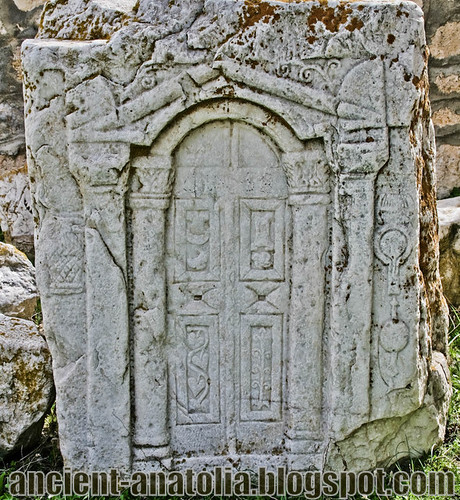
Ancient Roman gate to afterlife at Pessinus, Ankara, Turkey. A false door is a wall decoration that looks like a door. In ancient Egyptian architecture, this was a common element in a tomb, the false door representing a gate to the afterlife. They can also be found in the funerary architecture of the desert tribes (e.g., Libyan Ghirza).

More about this...